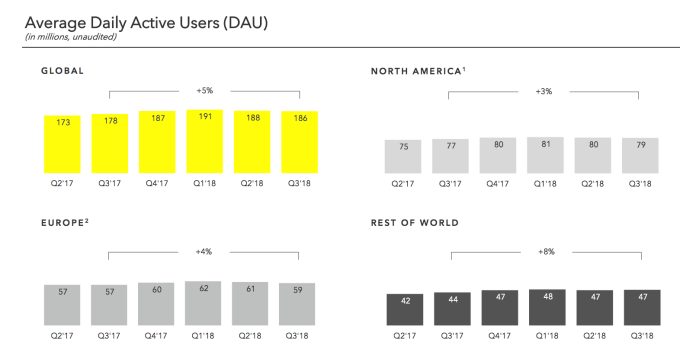
Which Best Selling Author Used Their Initials To Appeal To Young Male Readers? |
|
Think you know the answer? |
|
from How-To Geek https://ift.tt/2S2Cdiv

Which Best Selling Author Used Their Initials To Appeal To Young Male Readers? |
|
Think you know the answer? |
|

![]() Kelsey D. Atherton / New York Times:
Kelsey D. Atherton / New York Times:
A look at autonomous weapons systems being developed by the US and the arguments for and against imbuing autonomous robots with lethal decision-making — It's a freezing, snowy day on the border between Estonia and Russia. Soldiers from the two nations are on routine border patrol …

![]() Tony Peng / Synced:
Tony Peng / Synced:
Jia Li, R&D head of Google Cloud AI who also co-led Google's China AI Center in Beijing, has left the company to work full-time at Stanford University's AIMI — Head of R&D of Google Cloud AI Jia Li has left her position with the company. Li informed Synced in a text message yesterday …

![]() Erica X Eisen / Slate:
Erica X Eisen / Slate:
How a website, Civil War Photo Sleuth, is helping historians and enthusiasts use facial recognition software to identify people in Civil War photographs — Historians are using facial recognition software to identify people in Civil War photographs. — When Kurt Luther walked …

![]() New York Times:
New York Times:
Silicon Valley's alliance with Democrats, already strained by issues like fake news and Cambridge Analytica, is at a breaking point after NYT's Facebook expose — The alliance between Democrats and Silicon Valley has buckled and bent this year amid revelations that platforms like Facebook …

![]() Alex Stamos / Washington Post:
Alex Stamos / Washington Post:
Ex-CSO Alex Stamos says no one at Facebook ever told him not to examine Russian interference, but company's comms strategy of minimization and denial was wrong — Alex Stamos is a Hoover fellow and adjunct professor at Stanford University. He previously served as the chief security officer at Facebook until August.

![]() Mike Fleming / Deadline:
Mike Fleming / Deadline:
Mythical Games has raised $16M Series A to build out its blockchain-based player-owned economies starting on a EOS blockchain — Next generation game technology studio Mythical Games has secured $16 Million in its Series-A round. The company builds IPs and a digital ecosystem around player-owned economies …
![]() Trustnodes:
Trustnodes:
Crypto startup Amun says it has been given the green-light to list the first crypto Exchange Traded Product on Switzerland's SIX Swiss Exchange — The world's first crypto Exchange Traded Product (ETP) is to start trading next week on Europe's fourth biggest exchange, SIX Swiss Exchange, with a market capitalization of $1.6 trillion.

![]() Paul Thurrott / Thurrott.com:
Paul Thurrott / Thurrott.com:
Microsoft is now selling Amazon's Echo smart speakers from its retail and online stores — In yet another not-so-subtle indication that it is pushing Cortana aside for Amazon's digital personal assistant, Microsoft is now selling Echo smart speakers from its retail and online stores.
Microsoft announced plans to shut down HockeyApp and replace it with Visual Studio App Center. The company acquired the startup behind HockeyApp back in 2014. And if you’re still using HockeyApp, the service will officially shut down on November 16, 2019.
HockeyApp was a service that let you distribute beta versions of your app, get crash reports and analytics. There are other similar SDKs, such as Google’s Crashlytics, TestFairy, Appaloosa, DeployGate and native beta distribution channels (Apple’s TestFlight and Google Play Store’s beta feature).
Microsoft hasn’t really been hiding its plans to shut down the service. Last year, the company called App Center “the future of HockeyApp”. The company has also been cloning your HockeyApp projects into App Center for a while.
It doesn’t mean that you’ll find the same features in App Center just yet. The company has put up a page with a feature roadmap. Let’s hope that Microsoft has enough time to release everything before HockeyApp shuts down.
You may not have heard of ByteDance, but you probably know its red-hot video app TikTok, which gobbled up Musical.ly in August. The Beijing-based company also runs a popular news aggregator called Jinri Toutiao, which means “today’s headlines” in Chinese, and the app just assigned a new CEO.
At a company event on Saturday, Chen Lin, an early ByteDance employee, made his first appearance as Toutiao’s new CEO. That means Toutiao’s creator Zhang Yiming has handed the helm to Chen, who previously headed product management for the news app.
Zhang’s not going anywhere though. A company spokesperson told TechCrunch that he remains as the CEO of ByteDance, which operates a slew of media apps besides TikTok and Toutiao to lock horns with China’s tech giants Baidu, Alibaba, and Tencent.
The story of ByteDance started when Zhang created Toutiao in 2012. The news app collects articles and videos from third-party providers and uses AI algorithms to personalize content for users. Toutiao flew off the shelves and soon went on to incubate new media products, including a Quora-like Q&A platform and TikTok, known as Douyin in China.
The handover may signal a need for Zhang to step back from daily operations in his brainchild and oversee strategies for ByteDance, which has swollen into the world’s highest-valued startup. The company spokesperson did not provide further details on the reshuffle.
Toutiao itself is installed on over 240 million monthly unique devices, according to data analytics firm iResearch. TikTok and Douyin collectively command 500 million monthly active users around the world, while Musical.ly has a userbase of 100 million, the company previously announced.
Toutiao’s success has prompted Tencent, which is best known for creating WeChat and controlling a large slice of China’s gaming market, to build its own AI-powered news app. Toutiao’s fledgling advertising business has also stepped on the toes of Baidu, which makes the bulk of its income from search ads. More recently, Toutiao muscled in on Alibaba’s territory with an ecommerce feature.
At the Saturday event, Chen also shared updates that hint at Toutiao’s growing ambition. For one, the news goliath is working to help content providers cash in through a suite of tools, for instance, ecommerce sales and virtual gifts from livestreaming. The move is poised to help Toutiao retain quality creators as the race to grab digital eyeball time intensifies in China.
Toutiao also recently launched its first wave of “mini programs,” or stripped-down versions of native apps that operate inside super apps like Toutiao. Tencent has proven the system to be a big traffic driver after WeChat mini programs crossed two million daily users.
Lastly, Toutiao said it will take more proactive measures to monitor what users consume. In recent months, the news app has run afoul of media regulators who slashed it for hosting illegal and “inappropriate” content. Douyin has faced similar criticisms. While ByteDance prides itself on automated distribution, the company has demonstrated a willingness to abide with government rules by hiring thousands of human censors and using AI to filter content.
WhatsApp already ruined Snapchat’s growth once. WhatsApp Status, its clone of Snapchat Stories, now has 450 million daily active users compared to Snapchat’s 188 million. That’s despite its 24-hour disappearing slideshows missing tons of features including augmented reality selfie masks, animated GIFs, or personalized avatars like Bitmoji. A good enough version of Stories conveniently baked into the messaging app beloved in the developing world where Snapchat wasn’t proved massively successful. Snapchat actually lost total users in Q2 and Q3 2018, and even lost Rest Of World users in Q2 despite that being where late stage social networks rely on for growth.
That’s why it’s so surprising that WhatsApp hasn’t already copied the other big Snapchat feature, ephemeral messaging. When chats can disappear, people feel free to be themselves — more silly, more vulnerable, more expressive. For teens who’ve purposefully turned away from the permanence of the Facebook profile timeline, there’s a sense of freedom in ephemerality. You don’t have to worry about old stuff coming back to haunt or embarass you. Snapchat rode this idea to become a cultural staple for the younger generation.

Yet right now WhatsApp only lets you send permanent photos, videos, and texts. There is an Unsend option, but it only works for an hour after a message is sent. That’s far from the default ephemerality of Snapchat where seen messages disappear once you close the chat window unless you purposefully tap to save them.
Instagram has arrived at a decent compromise. You can send both permanent and temporary photos and videos. Text messages are permanent by default, but you can unsend even old ones. The result is the flexibility to both chat through expiring photos and off-the-cuff messages knowing they will or can disappear, while also being able to have reliable, utilitarian chats and privately share photos for posterity without the fear that one wrong tap could erase them. When Instagram Direct added ephemeral messaging, it saw a growth spurt to over 375 million monthly users as of April 2017.

Snapchat lost daily active users the past two quarters
WhatsApp should be able to build this pretty easily. Add a timer option when people send media so photos or videos can disappear after 10 seconds, a minute, an hour, or a day. Let people add a similar timer to specific messages they send, or set a per chat thread default for how long your messages last similar to fellow encrypted messaging app Signal.
Snap CEO Evan Spiegel’s memo leaked by Cheddar’s Alex Heath indicates that he views chat with close friends as the linchpin of his app that was hampered by this year’s disastrous redesign. He constantly refers to Snapchat as the fastest way to communicate. That might be true for images but not necessarily text, as BTIG’s Rich Greenfield points out, citing how expiring text can causes conversations to break down. It’s likely that Snapchat will double-down on messaging now that Stories has been copied to death.

Given its interest in onboarding older users, that might mean making texts easier to keep permanent or at least lengthening how long they last before they disappear. And with its upcoming Project Mushroom re-engineering of the Snapchat app so it works better in developing markets, Snap will increasingly try to become WhatsApp.
…Unless WhatsApp can become Snapchat first. Spiegel proved people want the flexibility of temporary messaging. Who cares who invented something if it can be brought to more people to deliver more joy? WhatsApp should swallow its pride and embrace the ephemeral.
A steep and rapid rise in tourism has left behind a wake of economic and environmental damage in cities around the globe. In response, governments have been responding with policies that attempt to limit the number of visitors who come in. We’ve decided to spare you from any more Amazon HQ2 talk and instead focus on why cities should shy away from reactive policies and should instead utilize their growing set of technological capabilities to change how they manage tourists within city lines.
Consider this an ongoing discussion about Urban Tech, its intersection with regulation, issues of public service, and other complexities that people have full PHDs on. I’m just a bitter, born-and-bred New Yorker trying to figure out why I’ve been stuck in between subway stops for the last 15 minutes, so please reach out with your take on any of these thoughts: @Arman.Tabatabai@techcrunch.com.
Well – it didn’t take long for the phrase “overtourism” to get overused. The popular buzzword describes the influx of tourists who flood a location and damage the quality of life for full-time residents. The term has become such a common topic of debate in recent months that it was even featured this past week on Oxford Dictionaries’ annual “Words of the Year” list.
But the expression’s frequent appearance in headlines highlights the growing number of cities plagued by the externalities from rising tourism.
In the last decade, travel has become easier and more accessible than ever. Low-cost ticketing services and apartment-rental companies have brought down the costs of transportation and lodging; the ubiquity of social media has ticked up tourism marketing efforts and consumer demand for travel; economic globalization has increased the frequency of business travel; and rising incomes in emerging markets have opened up travel to many who previously couldn’t afford it.
Now, unsurprisingly, tourism has spiked dramatically, with the UN’s World Tourism Organization (UNWTO) reporting that tourist arrivals grew an estimated 7% in 2017 – materially above the roughly 4% seen consistently since 2010. The sudden and rapid increase of visitors has left many cities and residents overwhelmed, dealing with issues like overcrowding, pollution, and rising costs of goods and housing.
The problems cities face with rising tourism are only set to intensify. And while it’s hard for me to imagine when walking shoulder-to-shoulder with strangers on tight New York streets, the number of tourists in major cities like these can very possibly double over the next 10 to 15 years.
China and other emerging markets have already seen significant growth in the middle-class and have long runway ahead. According to the Organization for Economic Co-operation and Development (OECD), the global middle class is expected to rise from the 1.8 billion observed in 2009 to 3.2 billion by 2020 and 4.9 billion by 2030. The new money brings with it a new wave of travelers looking to catch a selfie with the Eiffel Tower, with the UNWTO forecasting international tourist arrivals to increase from 1.3 billion to 1.8 billion by 2030.
With a growing sense of urgency around managing their guests, more and more cities have been implementing policies focused on limiting the number of tourists that visit altogether by imposing hard visitor limits, tourist taxes or otherwise.
But as the UNWTO points out in its report on overtourism, the negative effects from inflating tourism are not solely tied to the number of visitors in a city but are also largely driven by touristy seasonality, tourist behavior, the behavior of the resident population, and the functionality of city infrastructure. We’ve seen cities with few tourists, for example, have experienced similar issues to those experienced in cities with millions.
While many cities have focused on reactive policies that are meant to quell tourism, they should instead focus on technology-driven solutions that can help manage tourist behavior, create structural changes to city tourism infrastructure, while allowing cities to continue capturing the significant revenue stream that tourism provides.

THOMAS COEX/AFP/Getty Images
Yes, cities are faced with the headwind of a growing tourism population, but city policymakers also benefit from the tailwind of having more technological capabilities than their predecessors. With the rise of smart city and Internet of Things (IoT) initiatives, many cities are equipped with tools such as connected infrastructure, lidar-sensors, high-quality broadband, and troves of data that make it easier to manage issues around congestion, infrastructure, or otherwise.
On the congestion side, we have already seen companies using geo-tracking and other smart city technologies to manage congestion around event venues, roads, and stores. Cities can apply the same strategies to manage the flow of tourist and resident movement.
And while you can’t necessarily prevent people from people visiting the Louvre or the Coliseum, cities are using a variety of methods to incentivize the use of less congested space or disperse the times in which people flock to highly-trafficked locations by using tools such as real-time congestion notifications, data-driven ticketing schedules for museums and landmarks, or digitally-guided tours through uncontested routes.
Companies and municipalities in cities like London and Antwerp are already working on using tourist movement tracking to manage crowds and help notify and guide tourists to certain locations at the most efficient times. Other cities have developed augmented reality tours that can guide tourists in real-time to less congested spaces by dynamically adjusting their routes.
A number of startups are also working with cities to use collected movement data to help reshape infrastructure to better fit the long-term needs and changing demographics of its occupants. Companies like Stae or Calthorpe Analytics use analytics on movement, permitting, business trends or otherwise to help cities implement more effective zoning and land use plans. City planners can use the same technology to help effectively design street structure to increase usable sidewalk space and to better allocate zoning for hotels, retail or other tourist-friendly attractions.
Focusing counter-overtourism efforts on smart city technologies can help adjust the behavior and movement of travelers in a city through a number of avenues, in a way tourist caps or tourist taxes do not.
And at the end of the day, tourism is one of the largest sources of city income, meaning it also plays a vital role in determining the budgets cities have to plow back into transit, roads, digital infrastructure, the energy grid, and other pain points that plague residents and travelers alike year-round. And by disallowing or disincentivizing tourism, cities can lose valuable capital for infrastructure, which can subsequently exacerbate congestion problems in the long-run.
Some cities have justified tourist taxes by saying the revenue stream would be invested into improving the issues overtourism has caused. But daily or upon-entry tourist taxes we’ve seen so far haven’t come close to offsetting the lost revenue from disincentivized tourists, who at the start of 2017 spent all-in nearly $700 per day in the US on transportation, souvenirs and other expenses according to the U.S. National Travel and Tourism Office.
In 2017, international tourism alone drove to $1.6 trillion in earnings and in 2016, travel & tourism accounted for roughly 1 in 10 jobs in the global economy according to the World Travel and Tourism Council. And the benefits of travel are not only economic, with cross-border tourism promoting transfers of culture, knowledge and experience.
But to be clear, I don’t mean to say smart city technology initiatives alone are going to solve overtourism. The significant wave of growth in the number of global travelers is a serious challenge and many of the issues that result from spiking tourism, like housing affordability, are incredibly complex and come down to more than just data. However, I do believe cities should be focused less on tourist reduction and more on solutions that enable tourist management.
Utilizing and allocating more resources to smart city technologies can not only more effectively and structurally limit the negative impacts from overtourism, but it also allows cities to benefit from a significant and high growth tourism revenue stream. Cities can then create a virtuous cycle of reinvestment where they plow investment back into its infrastructure to better manage visitor growth, resident growth, and quality of life over the long-term. Cities can have their cake and eat it too.

![]() Richard Lawler / Engadget:
Richard Lawler / Engadget:
Report: Facebook notified some Instagram users that a now fixed bug in its data download tool sent their passwords in plaintext in a URL that the users received — According to The Information, Instagram has suffered a serious security leak of its own that could've exposed user's passwords.